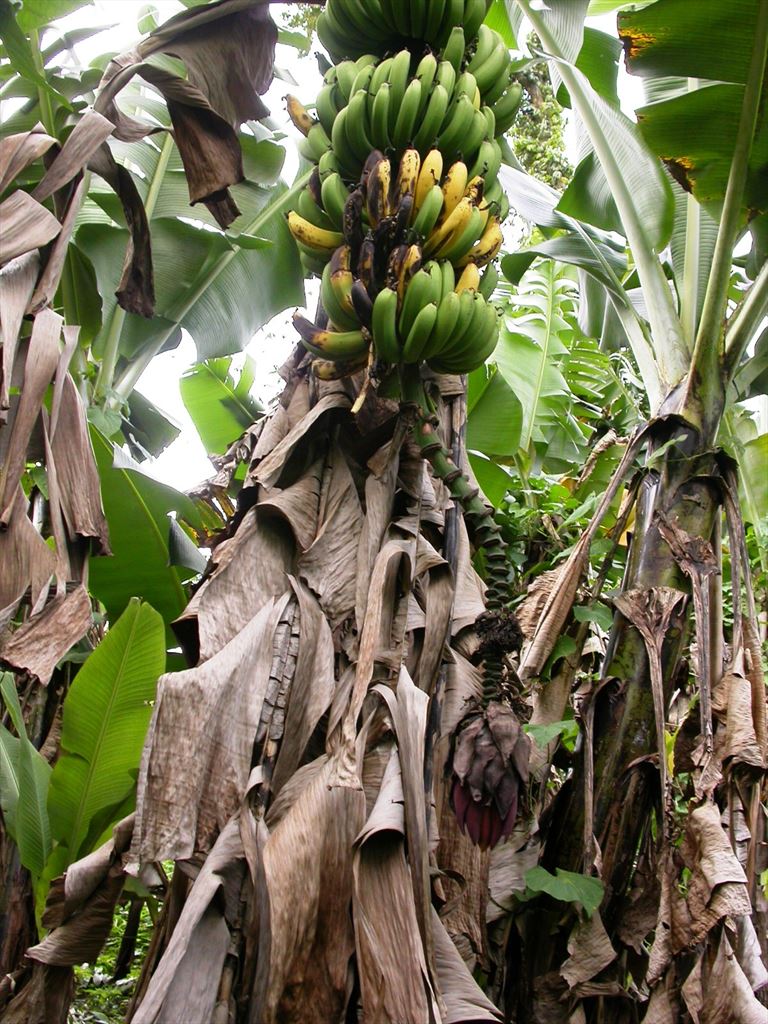banana moko disease
The symptoms of moko disease are very similar to those of banana blood disease BDB caused by blood disease bacterium which is considered a member of the R. It is related to banana blood disease.
Under The Microscope Moko Disease Australian Banana Growers
Panama disease Race 4 PDR4 is a deadly disease of bananas and plantains.

. The plant disease Moko caused by Ralstonia solanacearum is the most important bacterial disease in banana and plantain crops worldwide. In the Philippines the two diseases may seem different because moko is observed more. Many strains have less than 70 DNA-DNA homology which has been considered a threshold level within a species.
In the present study chlorine dioxide. Records are of confirmed race 2 or. Moko is caused by a bacterium called Ralstonia solanacearum which belongs to a group of pathogens that cause bacterial wilts in banana.
Moko disease is a bacterial wilt caused by Ralstonia solanacearum invading the vascular tissues of hosts. Moko disease of banana is caused by the bacterial pathogen Ralstonia solanacearum formally Pseudomonas solanacearum. In India the disease was first reported from West Bengal.
Moko disease wilt of banana. Fegan M Prior P 2006 Diverse members of the Ralstonia solanacearum species. It is caused by the soilborne fungus Fusarium oxysporum f.
Moko disease is a bacterial wilt caused by Ralstonia solanacearum invading the vascular tissues of hosts. Symptoms of banana blood disease share many characteristics with the insect-transmitted A and SFR strains of R. Solanacearum associated with bacterial wilt disease of banana crops in Malaysia none related to Moko disease has been reported.
Ralstonia solanacearum is a species complex with exceptional diversity amongst strains from different hosts and geographical origins. The Moko-Panama disease treatment system is administered by first injecting the affected plants and surrounding plants with a proprietary clay mineral extract. Although local reports suggested that this.
Bacterial wilt disease and the Ralstonia solanacearum species complex. Moko disease caused by Ralstonia solanacearum R. When talking about threats in Ecuadors banana industry concern is focused on the.
Moko and bugtok diseases of banana are caused by Ralstonia solanacearum Smith Yabuuchi et al. Susceptible varieties are the Robusta and Poovan from. Solanacearum is a major disease affecting banana Musa spp production.
Solanacearum causing Moko disease namely. Although there were previously extensive studies on R. This soil-borne bacterium causes.
It was first recorded in Guyana in 1840. Bacterial diseases in bananas and enset can be divided into three groups. 1 Ralstonia-associated diseases MokoBugtok disease caused by Ralstonia solanacearum and banana.
A survey of bacterial wilt of banana or Moko disease in various parts of the country revealed that it is present in Davao del Norte and Davao City where it is now causing serious losses to. It is considered a plantation with a maximum capacity of banana plants k It is considered that the disease of the banana Moko follows a model Epidemic type SI. PDR4 is currently not present in.
The list gives the distribution of the pathogen that causes Moko and Bugtok diseases of triploid bananas and also infects Heliconia spp.
Bacterial Wilt Moko Disease Banana Plantsdb
Various Symptoms Of Moko A Bugtok B Bacterial Wilt Caused By R Download Scientific Diagram
Banana Blood Disease Caused By R Syzygii Subsp Celebensis The Download Scientific Diagram
Banana Moko Disease Management With Resistance Inducers And Chlorine Dioxide
Moko Disease Has Been Greatly Reduced In Banana Plantations In Mexico
Internal Fruit Symptoms Of Blood Disease Of Banana Download Scientific Diagram
Symptoms Of Moko Disease On Musa Paradisiaca Cv Nipah Examined In This Download Scientific Diagram
Plantain Plant With Symptoms Of Moko Disease Download Scientific Diagram
Under The Microscope Moko Disease Australian Banana Growers
Various Symptoms Of Moko A Bugtok B Bacterial Wilt Caused By R Download Scientific Diagram
Comments
Post a Comment